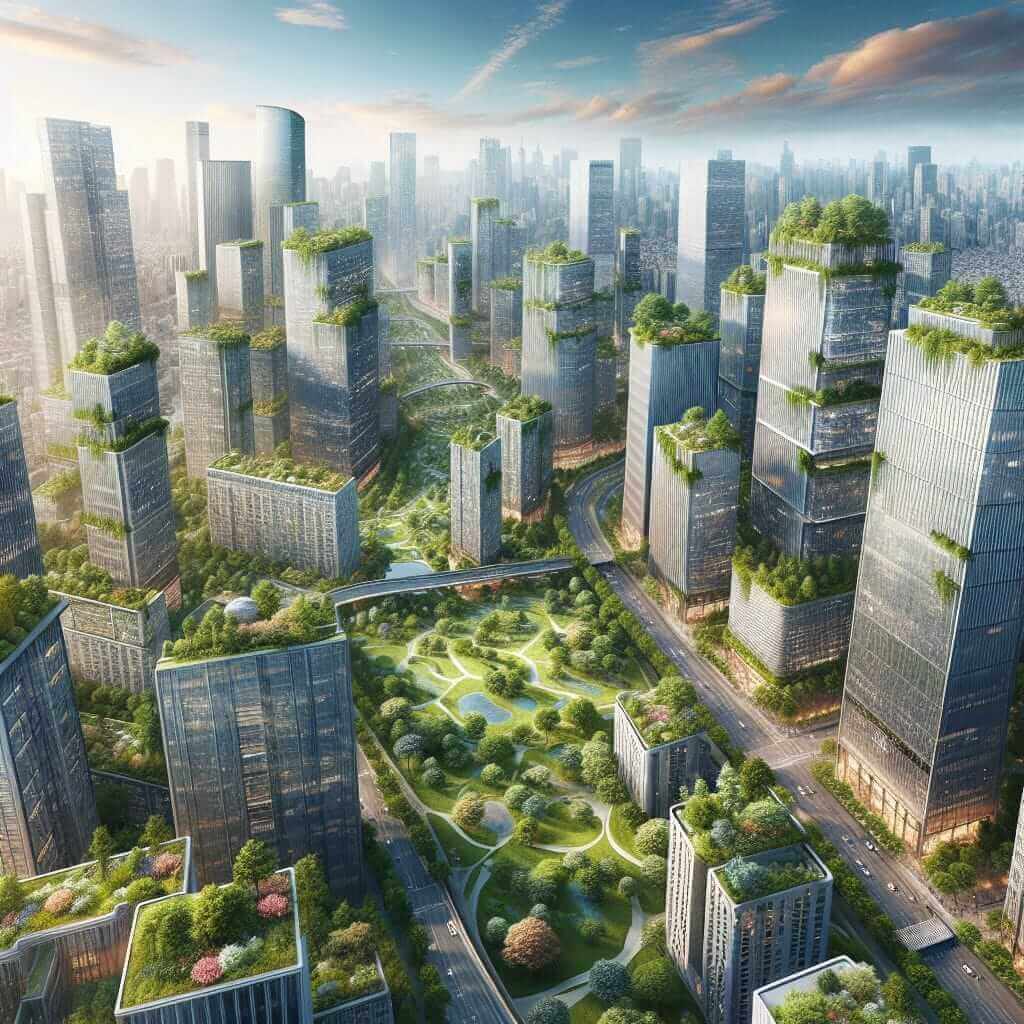The Reading section of the IELTS exam assesses a candidate’s ability to understand and interpret texts. One recurring topic in past IELTS exams is the impact of urbanization on green spaces. This theme is pertinent given the rapid urban growth worldwide. Understanding the link between urbanization and green spaces can enhance your comprehension skills, potentially boosting your reading score.
Sample Reading Passage: Urbanization and Green Spaces (Medium Text)
Urbanization, the process by which rural areas transform into urban centers, is a phenomenon prevalent in the 21st century. As cities expand, the availability of green spaces—parks, gardens, and recreational areas—tends to diminish. This transformation notably impacts the environment and public health.
Historically, green spaces in urban areas served critical roles in maintaining ecological balance and improving the quality of life. They provided residents with places for recreation, relaxation, and social interaction. Additionally, parks and gardens helped mitigate urban heat islands, reduce air and noise pollution, and support biodiversity.
However, the surge in urban development often prioritizes infrastructure over greenery. The construction of residential and commercial buildings, roads, and other facilities frequently leads to the encroachment on green spaces. This encroachment affects not only the availability but also the accessibility of these areas. For instance, in densely populated cities, green spaces may be limited to small, scattered patches that are often neglected.
Research indicates that the reduction of green spaces has several negative consequences. For one, it exacerbates environmental issues such as air and water pollution, leading to poorer public health outcomes. Additionally, the lack of accessible green areas can increase stress and mental health issues among urban dwellers. Children, particularly, suffer from reduced opportunities to engage in outdoor activities.
On the flip side, some urban planning initiatives have started prioritizing the inclusion of green spaces as essential components of sustainable city development. Urban planners and governments in progressive cities are integrating parks and green corridors within urban settings to create more livable environments.
To balance urban growth and green space preservation, innovative approaches are needed. Vertical gardens, green rooftops, and the transformation of vacant lots into community gardens are some solutions being explored. These measures not only enhance the aesthetic appeal of urban areas but also contribute significantly to environmental sustainability and public health.

Sample Questions
Multiple Choice
-
According to the passage, what is a major consequence of urbanization on green spaces?
A. Increased biodiversity
B. Encroachment on parks and gardens
C. Decrease in residential areas
D. Improved public health -
What are some benefits of green spaces mentioned in the passage?
A. They support biodiversity and reduce pollution
B. They increase property values
C. They promote industrial growth
D. They reduce traffic congestion
Identifying Information (True/False/Not Given)
- Urban heat islands are caused by a lack of green spaces. (True/False/Not Given)
- The passage mentions that all cities neglect the development of green spaces. (True/False/Not Given)
Sentence Completion
- ____ are cited as innovative approaches to balance urban growth and green space preservation.
Summary Completion
Complete the summary with words from the passage:
Urbanization often results in the of green spaces, impacting the and of these areas. Urban planners are now incorporating ____ such as green rooftops and community gardens to promote and enhance public health.
Answer Key and Explanations
-
B. Encroachment on parks and gardens
- Explanation: The passage discusses how urban development frequently leads to the reduction of green spaces.
-
A. They support biodiversity and reduce pollution
- Explanation: The benefits of green spaces, such as reducing pollution and supporting biodiversity, are clearly stated.
-
True
- Explanation: The text explicitly mentions that green spaces help to mitigate urban heat islands.
-
False
- Explanation: The passage notes that some urban planning initiatives prioritize green spaces, indicating not all cities neglect them.
-
Vertical gardens, green rooftops, and the transformation of vacant lots into community gardens
- Explanation: These examples are given as innovative approaches to balancing urban development and the preservation of green spaces.
Summary Completion:
Urbanization often results in the encroachment of green spaces, impacting the availability and accessibility of these areas. Urban planners are now incorporating solutions such as green rooftops and community gardens to promote sustainability and enhance public health.
Common Mistakes and Tips
- Context Misunderstanding: When interpreting a passage, ensure to understand the context; don’t rely solely on isolated sentences.
- Keyword Recognition: Identify and highlight keywords from the questions before looking for answers in the text.
- Time Management: Allocate your time wisely across the sections to ensure you can attempt all questions.
Vocabulary
- Encroachment (n) /ɪnˈkroʊtʃmənt/: gradual intrusion or invasion
- Mitigate (v) /ˈmɪtɪˌɡeɪt/: to make less severe
- Ecological balance (n) /ˌiː.kəˈlɑː.dʒɪ.kəl ˈbæl.əns/: the stable state of an ecosystem
- Biodiversity (n) /ˌbaɪ.oʊ.daɪˈvər.sə.ti/: the variety of life in the world or in a particular habitat
Grammar Focus
Relative Clauses
- Definition: Clauses that provide additional information about a noun without starting a new sentence.
- Example: “Urban planners, who are now prioritizing green spaces, are finding innovative solutions.”
Conditionals
- Definition: Used for hypothetical scenarios.
- Example: “If cities do not incorporate green spaces, they will suffer from increased pollution.”
Final Tips for IELTS Reading
- Practice Regularly: Regular practice with various texts will help improve your reading speed and comprehension.
- Enhance Vocabulary: A rich vocabulary aids in understanding a wide range of topics.
- Answer Extrapolation: Carefully read between the lines for implied meanings beyond the explicit text.
Good luck with your IELTS preparation!